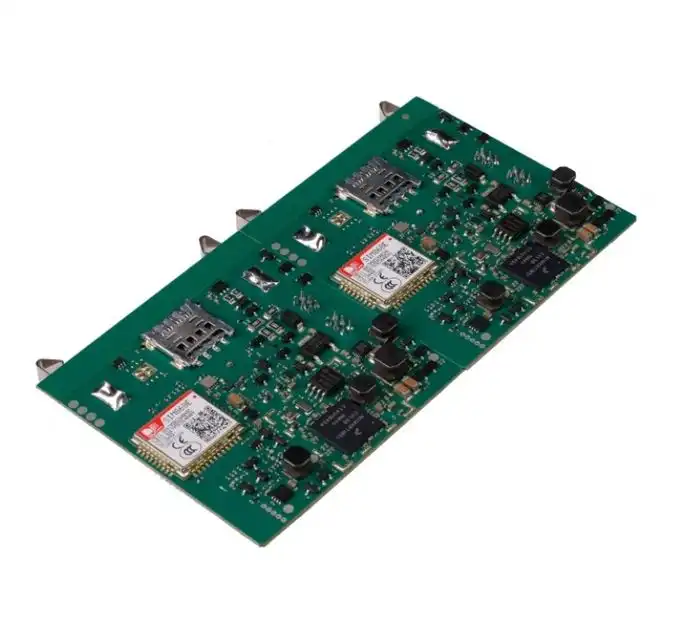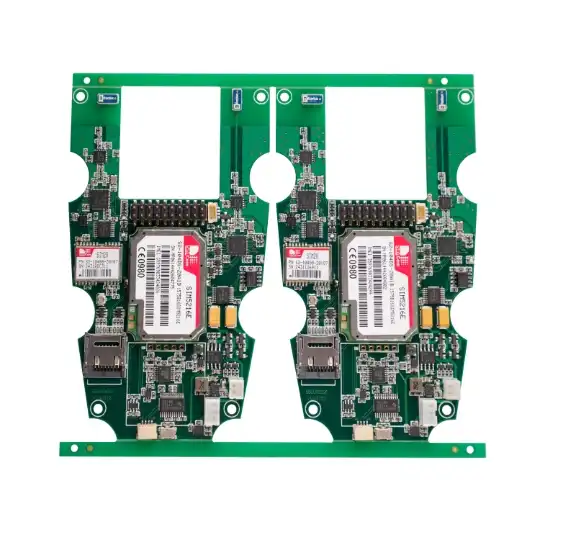What is a Bluetooth PCB Module?
A Bluetooth PCB module is a compact, integrated circuit board that incorporates Bluetooth wireless technology. These modules are designed to enable seamless communication between electronic devices without the need for wires or cables. Typically consisting of a Bluetooth chip, antenna, and supporting components, these modules can be easily integrated into various electronic products. Bluetooth PCB modules are essential for creating smart, connected devices in applications ranging from consumer electronics to industrial automation, offering low-power, short-range wireless connectivity solutions.

Understanding the Components of a Bluetooth PCB Module
Core Bluetooth Chip
The heart of any Bluetooth PCB module is its core Bluetooth chip. This sophisticated integrated circuit is responsible for processing and managing Bluetooth communications. Modern Bluetooth chips are marvels of miniaturization, often incorporating a microcontroller, memory, and radio frequency (RF) transceiver into a single package. These chips implement the Bluetooth protocol stack, handle data encryption, and manage power consumption to ensure efficient operation.
Antenna Design
The antenna is a crucial component of a Bluetooth PCB module, as it directly impacts the module's range and performance. Module designers must carefully consider antenna type, placement, and impedance matching to optimize signal transmission and reception. Common antenna types used in Bluetooth modules include chip antennas, PCB trace antennas, and external wire antennas. Each type offers different trade-offs between size, cost, and performance, allowing designers to choose the best option for their specific application.
Supporting Components
While the Bluetooth chip and antenna are the primary components, a Bluetooth PCB module requires several supporting elements to function effectively. These may include:
- Crystal oscillators for precise timing
- Power management ICs for voltage regulation
- Passive components like capacitors and resistors for filtering and impedance matching
- ESD protection devices to safeguard against electrostatic discharge
The careful selection and layout of these components are essential for creating a reliable and high-performance Bluetooth module.
Applications and Advantages of Bluetooth PCB Modules
Consumer Electronics Integration
Bluetooth PCB modules have revolutionized the consumer electronics industry by enabling wireless connectivity in a wide range of devices. From smartphones and laptops to wireless headphones and smart home devices, these modules facilitate seamless data transfer and audio streaming. The compact nature of Bluetooth PCB modules allows manufacturers to create sleek, portable devices without compromising on functionality. As the Internet of Things (IoT) continues to grow, Bluetooth modules are becoming increasingly important in connecting everyday objects to the digital world.
Industrial and Medical Applications
Beyond consumer electronics, Bluetooth PCB modules have found significant applications in industrial and medical sectors. In industrial settings, these modules enable wireless sensor networks for monitoring equipment performance and environmental conditions. The low power consumption of Bluetooth Low Energy (BLE) modules makes them ideal for battery-operated sensors in remote locations. In the medical field, Bluetooth modules are used in wearable health monitors, glucose meters, and other portable medical devices, allowing for real-time data transmission to healthcare providers.
Energy Efficiency and Cost-Effectiveness
One of the primary advantages of Bluetooth PCB modules is their energy efficiency, particularly with the introduction of Bluetooth Low Energy (BLE) technology. BLE modules can operate for months or even years on a single coin cell battery, making them ideal for IoT devices and wearables. Additionally, the widespread adoption of Bluetooth technology has led to economies of scale, reducing the cost of these modules. This cost-effectiveness, combined with their small form factor, makes Bluetooth PCB modules an attractive option for manufacturers looking to add wireless connectivity to their products without significantly increasing production costs.
Future Trends and Developments in Bluetooth PCB Modules
Enhanced Range and Speed
The evolution of Bluetooth technology continues to push the boundaries of what Bluetooth PCB modules can achieve. Recent versions of the Bluetooth standard, such as Bluetooth 5.0 and beyond, offer significant improvements in range and data transfer speeds. These advancements are reflected in newer Bluetooth PCB modules, which can now support connections over distances of up to 400 meters in ideal conditions. This extended range opens up new possibilities for Bluetooth in outdoor and industrial applications where longer-range communication is crucial.
Integration with Other Wireless Technologies
As the demand for versatile wireless solutions grows, we're seeing a trend towards hybrid Bluetooth PCB modules that integrate multiple wireless technologies. These combo modules might combine Bluetooth with Wi-Fi, NFC, or even cellular capabilities, offering manufacturers a single-chip solution for diverse connectivity needs. This integration not only simplifies product design but also reduces power consumption and overall device size, making it easier to create multi-functional, connected devices.
Advancements in Security Features
With the increasing concern over data privacy and security in wireless communications, future Bluetooth PCB modules are likely to incorporate more advanced security features. This may include hardware-based encryption, secure boot processes, and enhanced authentication mechanisms. As Bluetooth continues to be adopted in sensitive applications like medical devices and smart home security systems, these security enhancements will be crucial in maintaining user trust and protecting against potential vulnerabilities.
Conclusion
Bluetooth PCB modules have become an indispensable component in the world of wireless technology. Their compact size, energy efficiency, and versatility make them ideal for a wide range of applications, from consumer electronics to industrial and medical devices. As Bluetooth technology continues to evolve, we can expect to see even more innovative uses for these modules, pushing the boundaries of what's possible in wireless connectivity. Whether you're a product designer, an electronics enthusiast, or simply curious about the technology behind your wireless devices, understanding Bluetooth PCB modules provides valuable insight into the interconnected world we live in.
Integrated Bluetooth modules for seamless device pairing | Ring PCB
Ring PCB Technology Co., Limited offers comprehensive one-stop PCB and PCBA services, including Bluetooth module integration. With 17 years of experience, we deliver innovative and cost-effective solutions for various industries. Our integrated PCBA services include full assembly support, DFM/DFA optimization, and rigorous quality control. Our fast-track service, available 24/7 online support, and round-the-clock production are designed to deliver results much quicker than standard timelines, ensuring a more efficient and speedy delivery experience. For seamless Bluetooth integration and top-quality PCB solutions, contact us at [email protected].
References
1. Bluetooth SIG, Inc. (2021). "Bluetooth Core Specification Version 5.3"
2. Gupta, N. K. (2019). "Inside Bluetooth Low Energy, Second Edition". Artech House.
3. Heydon, R. (2020). "Bluetooth Low Energy: The Developer's Handbook". Prentice Hall.
4. Afzal, A., et al. (2019). "Evolution of Bluetooth 5.0 and Internet of Things: A Survey". ACM Computing Surveys.
5. Woolley, M. (2021). "Bluetooth 5.1: What's New and Why it Matters". Bluetooth SIG, Inc. Technical Article.

Welcome to Ring PCB! Share your inquiry, and receive a tailored quotation!

Ring PCB, your trusted partner for PCB & PCBA Full Turnkey Solutions



